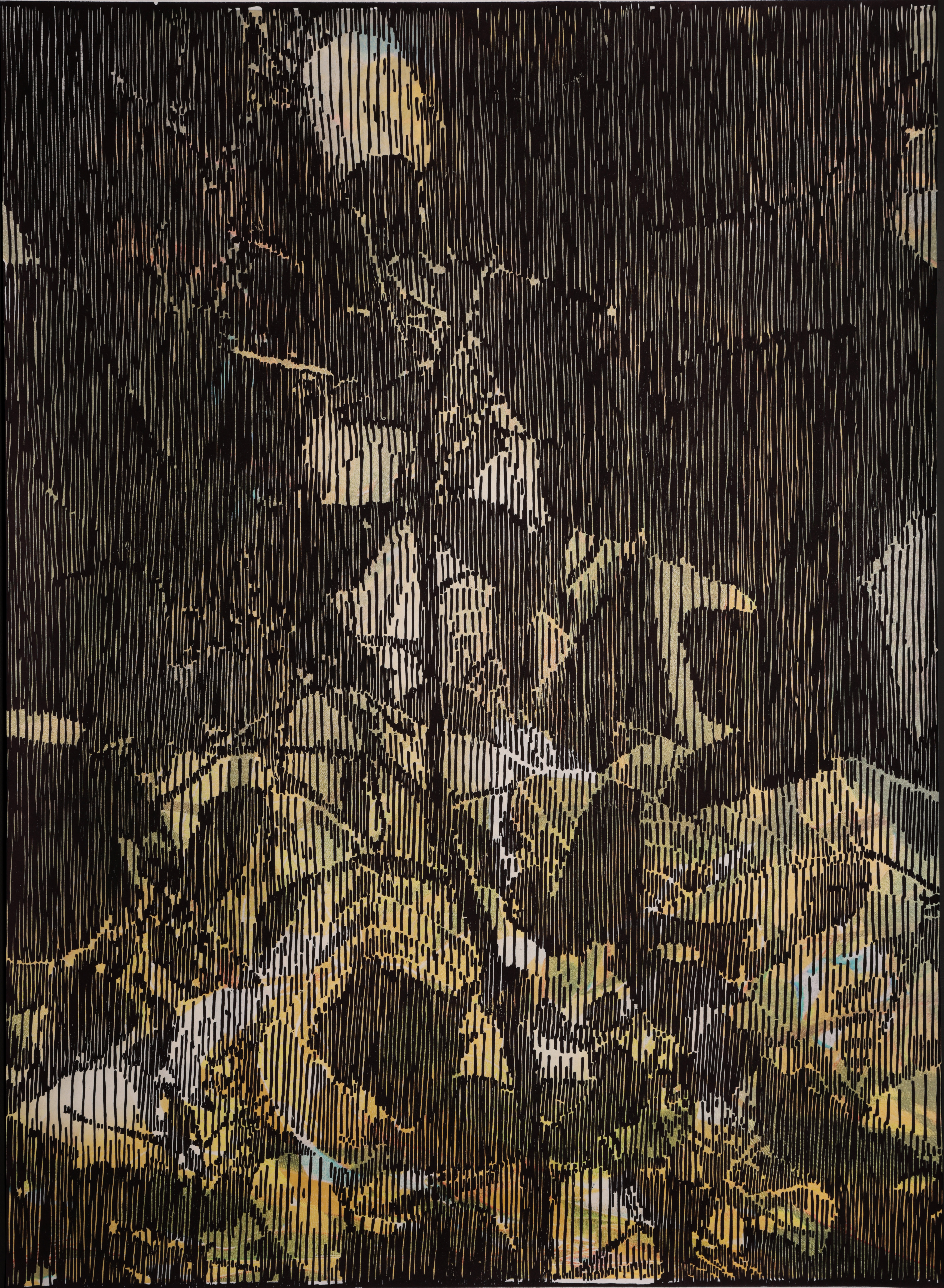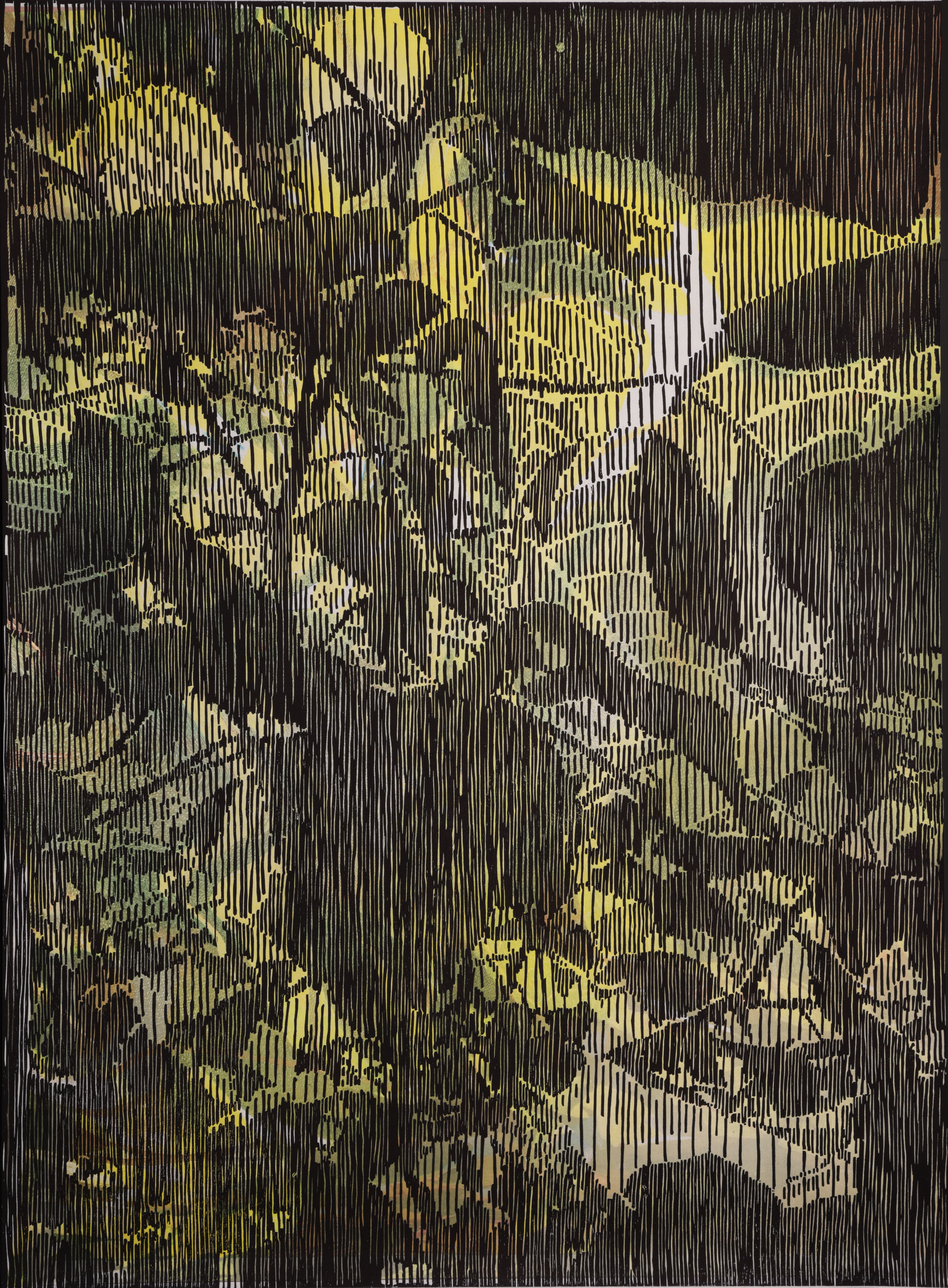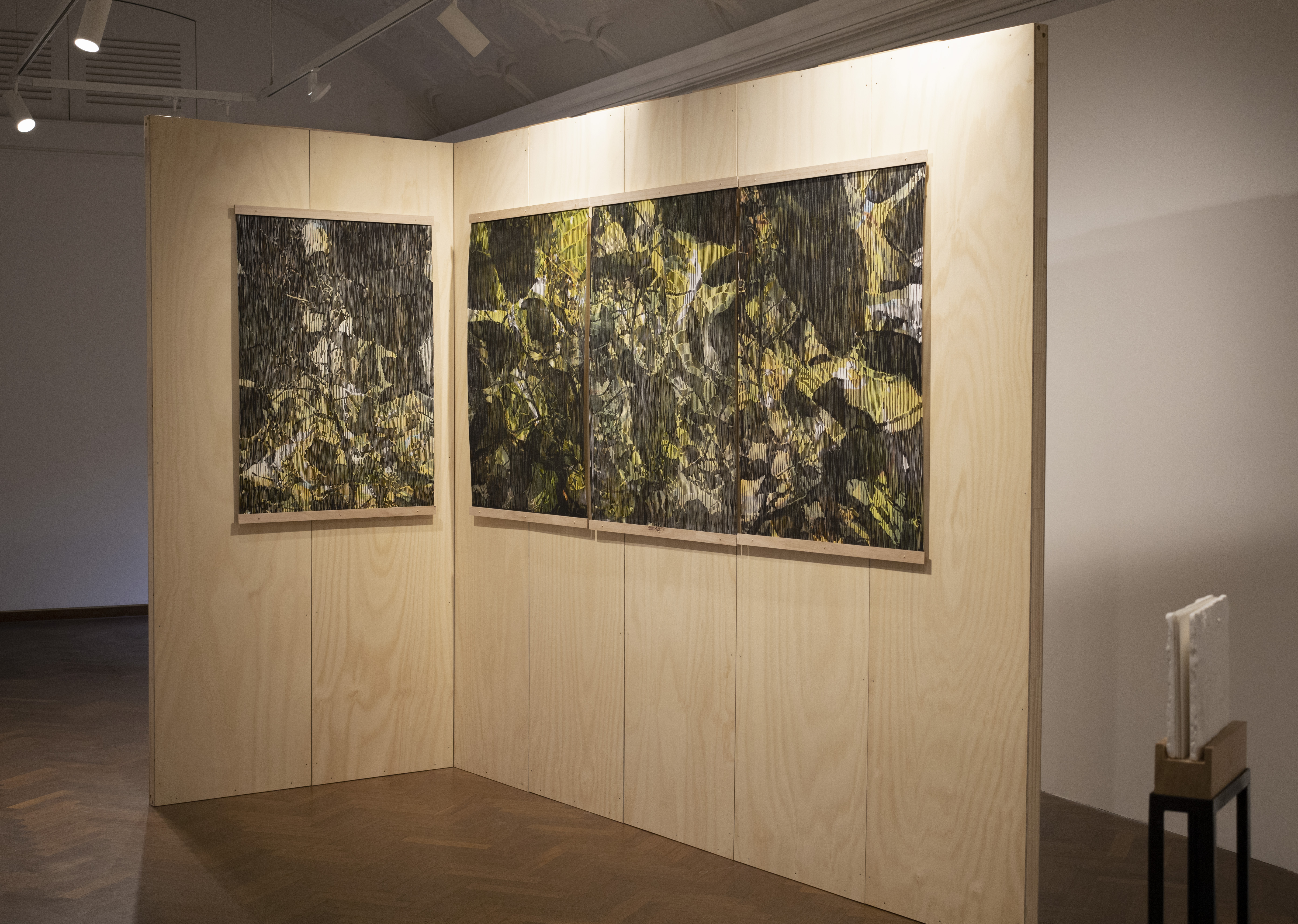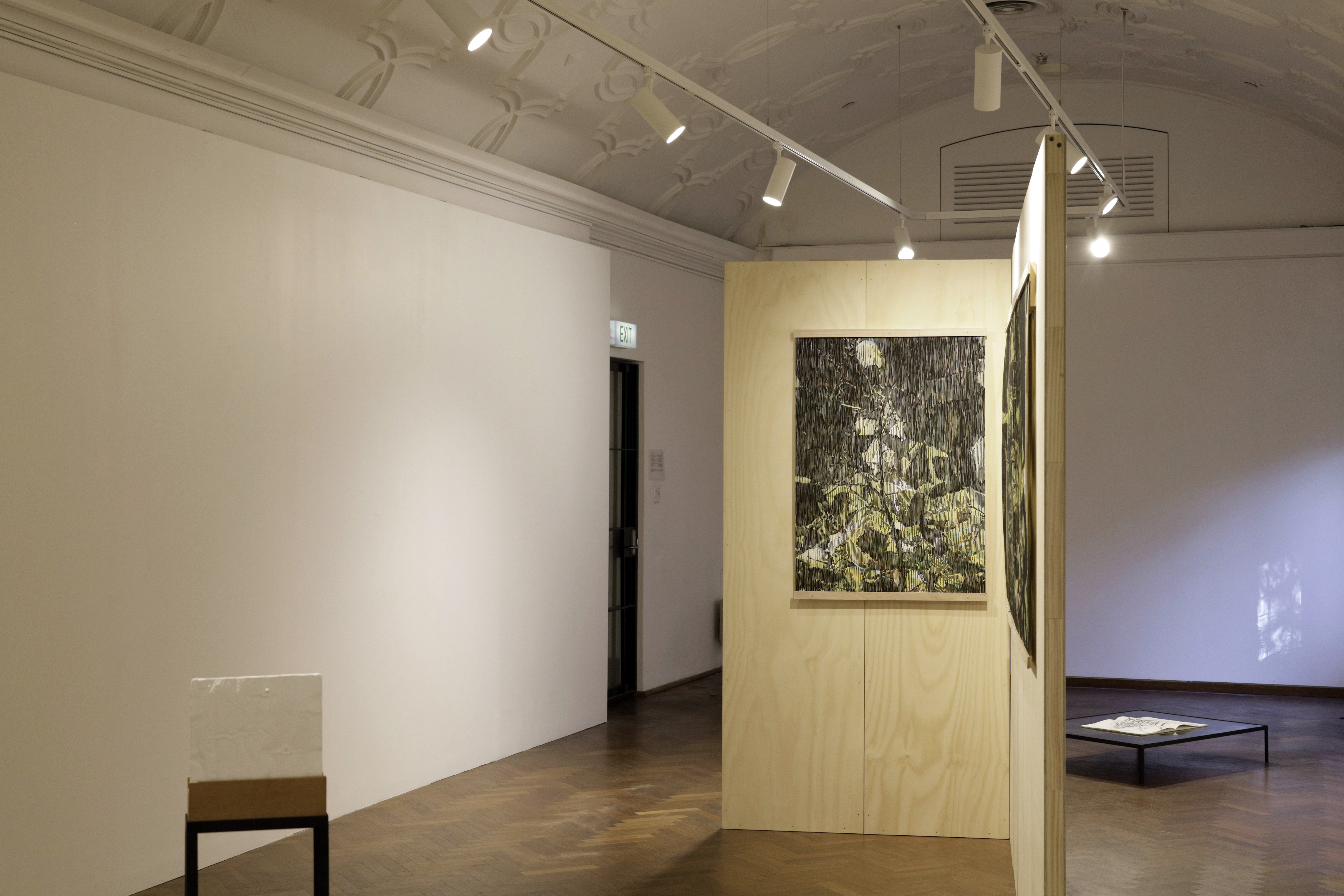














Bleeding Heart
Untitled #1 (Bleeding Heart), digital print, woodcut flocked with charcoal on kozo paper, 2023
Untitled #2 (Bleeding Heart), digital print, woodcut flocked with charcoal on kozo paper, 2023
Untitled #3 (Bleeding Heart), digital print, woodcut flocked with charcoal on kozo paper, 2023
Untitled #4 (Bleeding Heart), digital print, woodcut flocked with charcoal on kozo paper, 2023
The Weed Pile, eco-printing on BFK Rives, drum leaf binding, screen printed mirror and steel stand, 2023
A Feeling of Skin, plaster cast, modified drum leaf binding, huon pine and steel stand, 2023
Bleeding Heart Story, frottage and screen print on kozo paper, scroll mounted in box with steel stand, 2023
Untitled #1 (Bleeding Heart), digital print, woodcut flocked with charcoal on kozo paper, 2023
Untitled #2 (Bleeding Heart), digital print, woodcut flocked with charcoal on kozo paper, 2023
Untitled #3 (Bleeding Heart), digital print, woodcut flocked with charcoal on kozo paper, 2023
Untitled #4 (Bleeding Heart), digital print, woodcut flocked with charcoal on kozo paper, 2023
The Weed Pile, eco-printing on BFK Rives, drum leaf binding, screen printed mirror and steel stand, 2023
A Feeling of Skin, plaster cast, modified drum leaf binding, huon pine and steel stand, 2023
Bleeding Heart Story, frottage and screen print on kozo paper, scroll mounted in box with steel stand, 2023
Arising from a growing awareness of climate crisis, this project aims to rethink my relationship to the environment by turning to trees as a model for new ways of relating. Recognising that the dominant mode of relation in the West is one that emphasises human difference and separation from the environment, I look to trees as paradigms of a dialogic and reciprocal entanglement with the world. Doing so raises questions about how to think of myself in relationship to the environment: as an autonomous, sovereign agent, or—like trees—as inextricably entangled in my world? Simultaneously, I acknowledge that the denigrated position of the “natural” world in the West is intimately tied to colonialism and thus to the exploitation of indigenous peoples. For this reason, any attempt to rethink my relationship with the environment must necessarily acknowledge my position as a White settler-coloniser living on stolen land.
Over the course of the project I have continually returned to the question, “How might I begin to think with trees?” as a touchstone for my research. In the process, two practice-led modes of research—woodcut and artist’s books—have emerged as a way of starting to answer this question by bringing me into direct contact with trees as both living beings and material. These ways of making have highlighted touch and the haptic as an ethical and meaningful way of re-imagining myself in relation to the environment.